Weld Grill Out of 55 Gal Drum Surfacing Weld Art
Blacksmithing Forge 101: How To Brand Forges At Home
Guide to Blacksmithing Forges
By Kristin Arzt
Blacksmithing forges have been used past metalworkers for millennia. Blacksmiths utilize a forge to heat and shape metal. The forge has remained similar in pattern and purpose for thousands of years, and the modern forge equally we know it works essentially the same equally those of its predecessors. Hither, nosotros will explain how each type of forge works, how to build your blacksmithing forge, and exactly what yous need to start blacksmithing at habitation.
What is a blacksmithing forge?
A blacksmithing forge is a type of hearth that a blacksmith uses to rut and shape metals into objects, tools, and more than. It is typically a basin that consists of a rut source and an oxygen input to bring metals upward to a temperature where they can be easily worked and shaped.
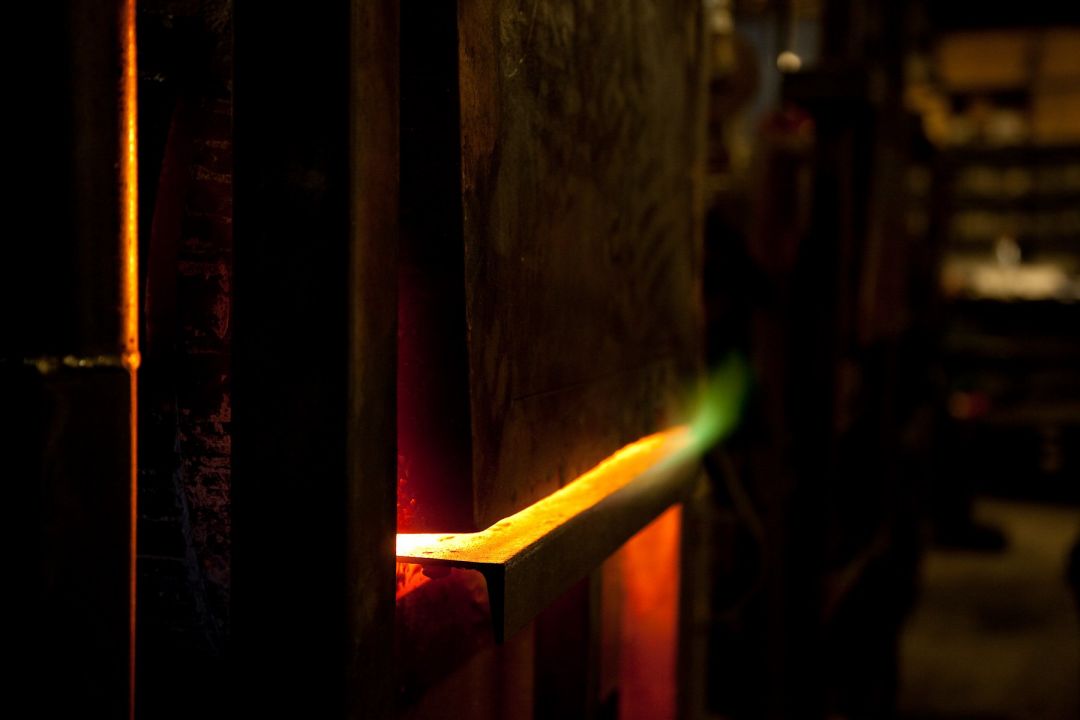
How does a forge piece of work?
The traditional blacksmithing forge uses a combination of burn, fuel, and moving air. While the forge is in functioning, the blacksmith ignites solid fuel within of the hearth. A source of moving air introduces boosted oxygen into the burn down. Traditionally, this would have been done with large bellows. Modern forges apply fans. The oxygen enters the forge through the tuyere, which is a pipe on the forge. The oxygen raises the temperature of the fire and allows the forge to burn hotter. It must get to a temperature where it becomes easier to shape metal, or to the signal where hardening no longer occurs. It is mutual for indoor modern forges to utilize a chimney and vent to filter smoke out of the blacksmith shop. A blacksmith has to continuously balance the fuel and air in a traditional forge while they are working.
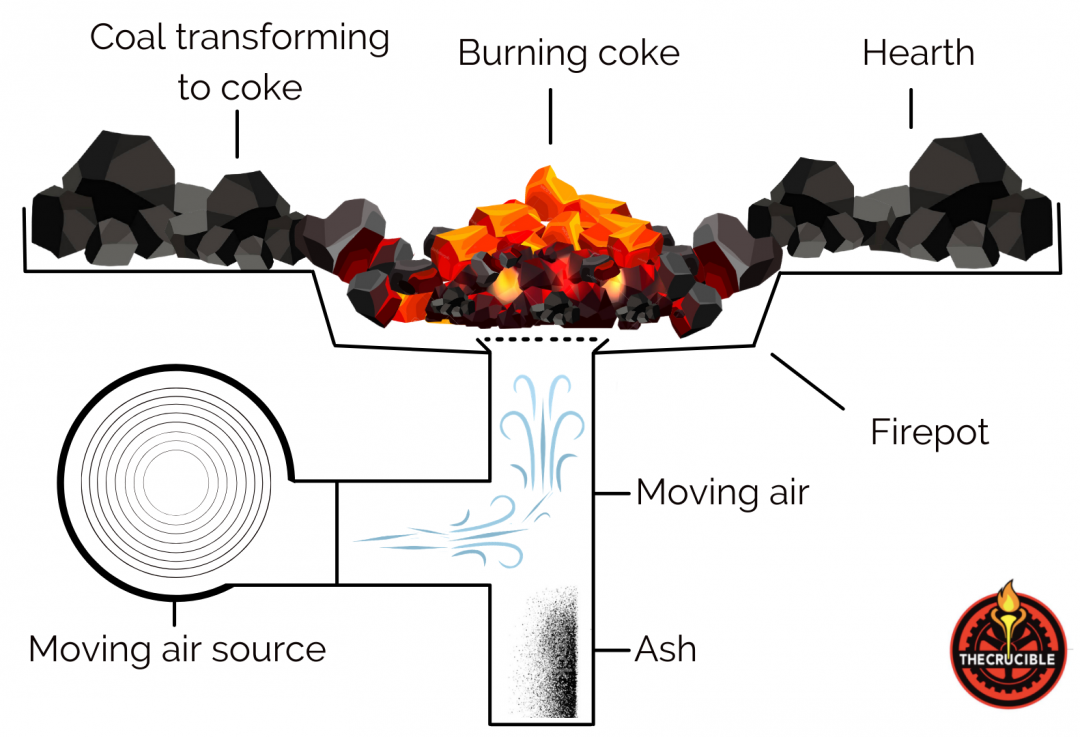
What is the difference betwixt a forge, furnace, and foundry?
While sometimes these terms are used interchangeably, they each perform very different functions when heating metals. A foundry melts metals in special furnaces to be cast into molds. A forge is a furnace or hearth where metals are heated prior to hammering them into shape. The act of forging is heating and hammering metal into a shape.
How to brand a forge at dwelling
Many blacksmiths and hobbyists build their own forges at home. The post-obit step-past-step guide outlines how to brand a solid fuel forge, which is powered past hot charcoal and is ideal for forging small objects. This forge can reach temperatures hot enough for forge welding, is cheap to build, and is a great introductory forge to use.
Supplies needed to make your own forge
-
Stainless steel container – annihilation from a brake drum to a charcoal BBQ grill
- (4) 40 mm M6 bolts and (4) washers and bolts
- Steel pipe for air supply
- Sand – clean beach sand, play sand, or kiln sand
-
Ability drill and 6mm drill flake
- Air source – paw crank blower, bellows, or air compressor
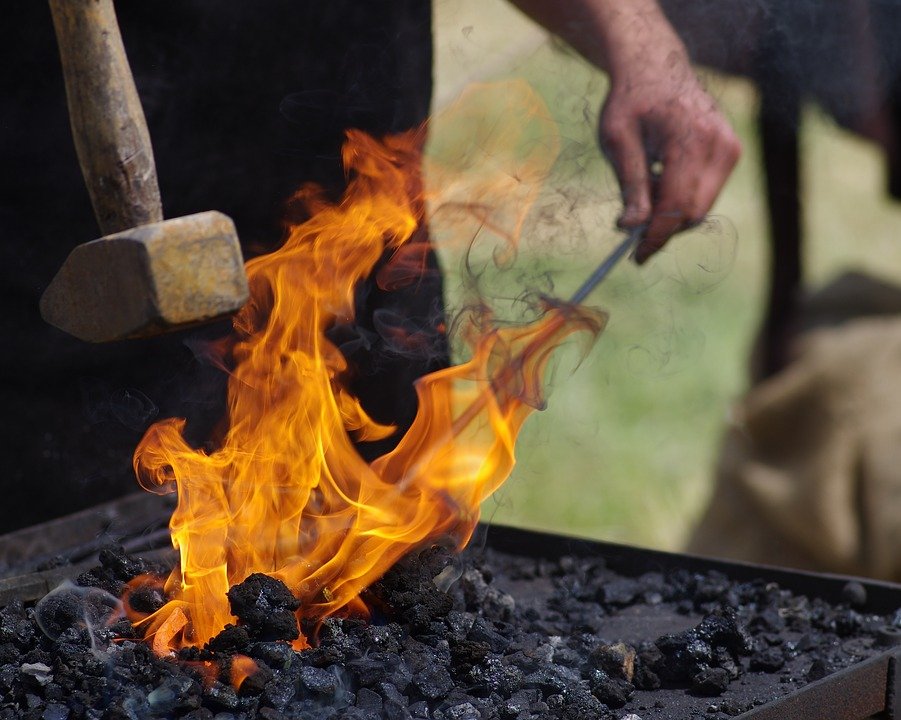
Stride ane: Set up a safe working environment
Always vesture safe equipment when working with and effectually the forge. At a minimum, you should wear prophylactic glasses and natural cobweb clothing, similar a long sleeve cotton wool canvas work shirt and pants, to protect your skin. Prepare your forge in an outdoor space. It is extremely important to work in a well-ventilated area outdoors when you are building a forge at home. A well-ventilated workspace prevents the buildup of carbon monoxide. If you are working in a garage, open the garage door and install a carbon monoxide detector. If you are building out a professional blacksmith shop indoors, research installing an exhaust hood.
Step 2: Punch a hole
Using a chisel or punch, brand a middle punch hole in each corner of the steel tray. So, utilise your power drill and a 6mm bit to drill all the way through each hole simply marked.
Step 3: Add legs
Through each hole, insert an M6 bolt and attach a washer and a nut. This raises your forge off the ground and helps with insulation.
Step 4: Add together a hole to connect the air supply
Drill a hole in ane side of your metal basin to connect your air supply to your steel pipage. Insert the pipe and so that a length of near vi inches extends from the hole. This is your tuyere where the air source will add oxygen to your forge. Building your air source on the side of your forge ensures your forge is elementary and practical to use. If the tuyere was in the bottom, it would fill with ash. It is also to your advantage to have localized heat on one side of the forge and cool charcoal on the other. As you work in the forge, you tin can button your coal along to the cooler side every bit it cools downwardly, and have a estrus reserve on the side of your tuyere.
Step v: Add together your air supply
Attach an air source to the pipe to proceed oxygen flowing. Air compressors, hand creepo blowers, or bellows all work well. Some habitation blacksmiths even employ hair dryers, only the express settings can make it hard to control the amount of oxygen beingness fed into your forge. If the width of your chosen air supply differs from the tuyere, y'all may have to brand an adapter to fit your piping to the correct width.
Step six: Insulate your forge
Employ a 50/50 combination of Plaster of Paris and sand to insulate the base of operations of your tray with a refractory blanket. Mix the ii ingredients together dry and add a small amount of water until it is a clay-like consistency. You are aiming for a 1cm coating all around the inside of the tray. Permit it dry out for a few hours.
Step vii: Fuel your forge
This is a charcoal powered forge and is very easy to calorie-free. Merely lite information technology as you would a charcoal grill and turn on your air supply.
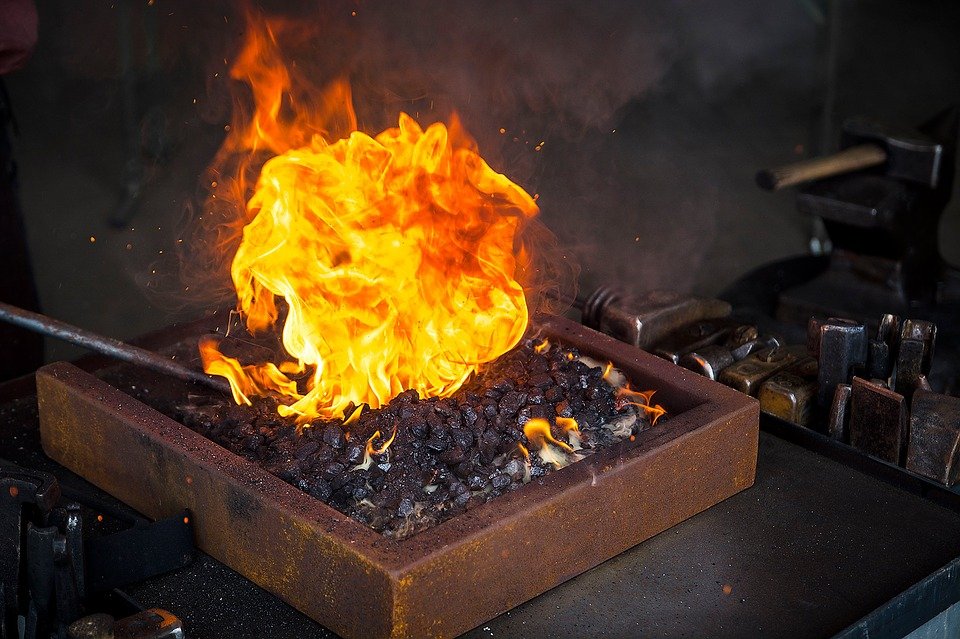
Common types of forges
In that location are three types of forges to cull from: solid fuel, gas, and electric induction. The forge above is one of the least expensive and simplest forges, only experienced fabricators can build forges that are more energy-efficient, larger, and/or more powerful. The blazon of forge you choose to work in will depend on your workspace, upkeep, and projects. Every forge must have some class of hearth in which the blacksmith heats the metal to exist forged.
Gas forges
The main advantage of a gas-powered forge is the ease of use, particularly for a outset blacksmith since the fire produced is clean, consequent, and hands controlled. Some disadvantages to using a gas forge is that it cannot be hands reformed for different sized projects, and it is hard to heat a small part of a project. A gas forge is piece of cake to construct and materials are readily available. You can build one with a propane blowtorch and a firebrick construction.
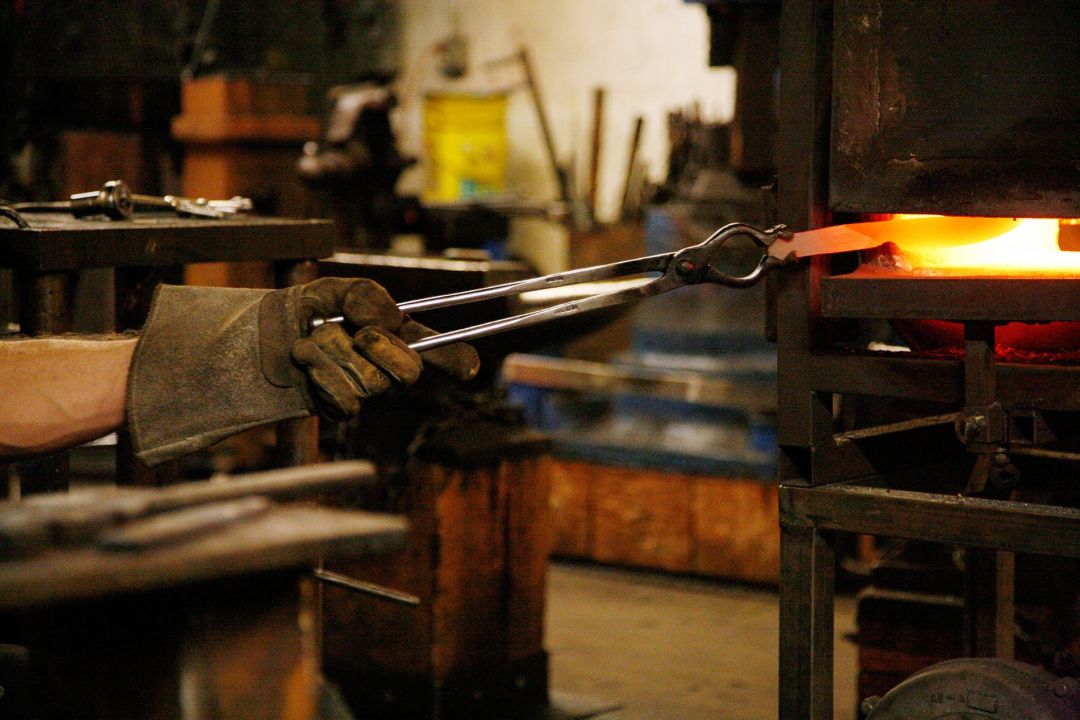
Induction forges
Induction forges apply an induction coil to estrus metal, rather than being powered by solid fuel or gas. The advantage of using an induction forge for blacksmithing is that information technology is an energy-efficient and easily controlled heating procedure compared to nearly other means of metal melting. They can exist more expensive to ready, depending on your access to power at home. Power supplies can vary in frequency from 50 Hz to 200 kHz, exceeding typical household electrical power, and potentially requiring the blacksmith to set up up a new circuit breaker and/or transformer to accommodate. This blazon of forge tin can work well for smaller projects and for blacksmiths with the proper electrical setup at home.

Solid fuel forges
A coal forge will piece of work well if y'all have a larger store and practise not plan to move your forge afterwards it is set up. The coal forge has a larger and more open up hearth pan giving yous more room and stability for larger or more oddly shaped pieces. Because a coal forge isn't enclosed like most gas forges, it tin can be easier to find the right position to heat your metal. Coal is a preferable heat source because it burns slowly and efficiently, while charcoal burns hotter and more apace. Some blacksmiths prefer to brand their own coal from forest by creating a hot campfire and dousing it with water. One time this dries out completely, yous are left with perfect charcoal for the forge.
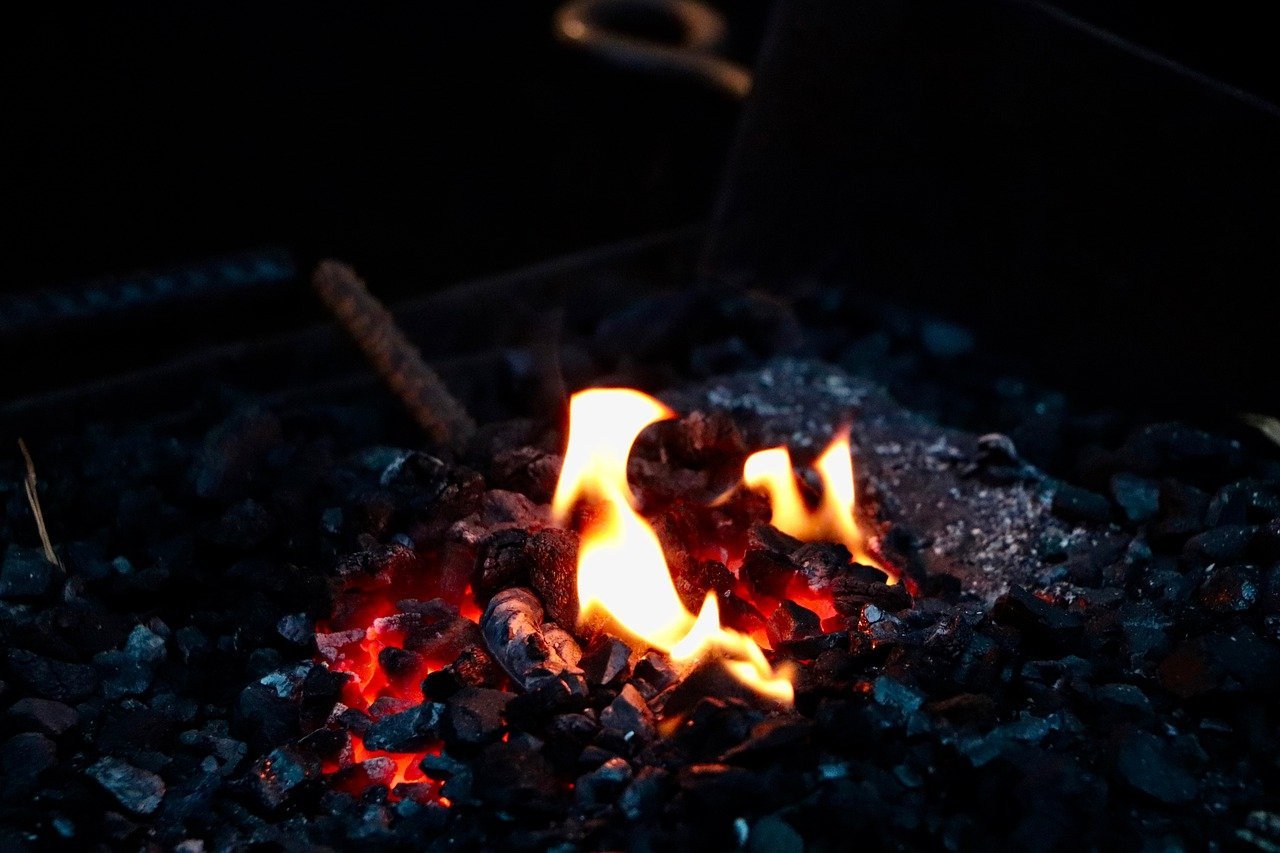
Blacksmithing forge FAQs
What type of forge practise I need?
Determining the type of blacksmithing forge you need depends on the projects you would like to create and your capacity to build a forge at habitation. Induction forges are best for smaller projects and those with a large electrical capacity. Gas forges are ideal for novice blacksmiths interested in working on smaller projects and on a portable level. Lastly, solid-fuel or coal forges work well for big projects and inexpensive setups. You tin build your own simple solid-fuel forge past post-obit the steps nosotros laid out in the seven steps above.
Tin I build a forge at home?
Yep, you can build a blacksmithing forge at habitation! Solid fuel forges are inexpensive to fix and can use anything from a soup can to a BBQ grill as a hearth. Propane fueled forges are a bang-up option for novice blacksmiths that are just getting started and can be portable.
How much practice forges cost?
You can build your own hobby forge in your backyard for as lilliputian as $20 in consumables, following the do-it-yourself model nosotros outlined higher up. If you lot are interested in setting up a more permanent store, a brand new gas forge ranges from $500 to $800 and a new solid fuel forge will range from $800 to $1600. Centaur Forge is a slap-up resource for forges and blacksmithing tools.
How do you lite a blacksmith forge?
Depending on the type of forge you commit to, lighting it will be unlike for each forge. A coal forge is lit similarly to a barbeque grill. Gas forges require a lighting mechanism. Depending on what yous have access to, you can use a welding flint lighter or a propane plumbing torch.
Continue Exploring Guides In Metal
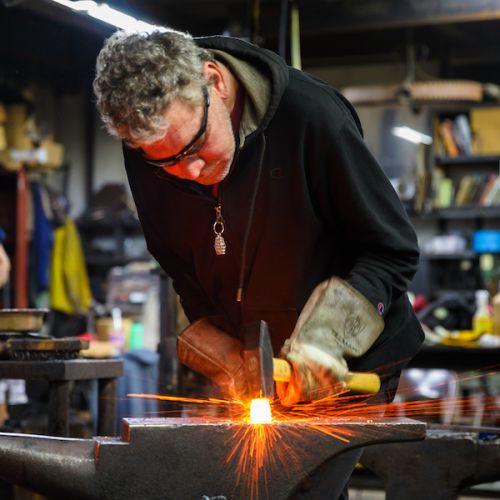
This Guide Has The Expert Postage of Approval
Jeff Pringle, Blacksmithing Faculty, Bladesmithing
Jeff Pringle makes knives from gathering iron ore himself, to smelting the atomic number 26, to forging the blade. Through post-obit this process from start to terminate, Jeff aims to reconnect to the processes of past bladesmiths, whose traditions go back thousands of years.
You Tin can Learn To Forge Metal
The Crucible has new blacksmithing classes offered weekly.
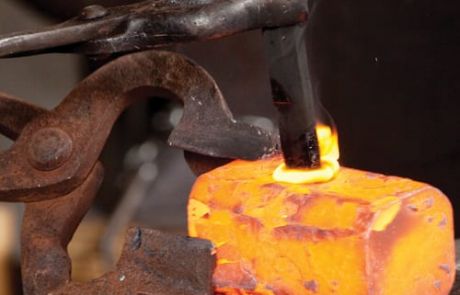
Forge Your Ain Blacksmithing Tools
Create your own blacksmithing tools! You volition make a punch and learn how to use it to punch the centre on a hammerhead. Yous will learn techniques in double striking and estrus-treating,...
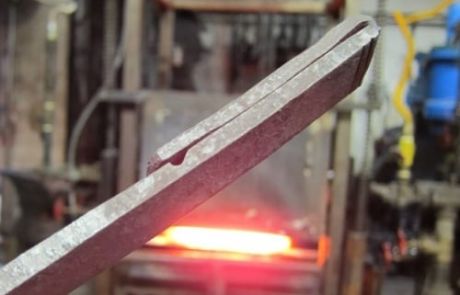
Forge Welding
For centuries, forge welding was the only fashion to weld steel and iron, well-nigh commonly beingness used for pattern welding blades and knives. Now, yous can deepen your blacksmithing skills...
Source: https://www.thecrucible.org/guides/blacksmithing/blacksmithing-forge/
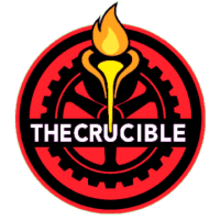
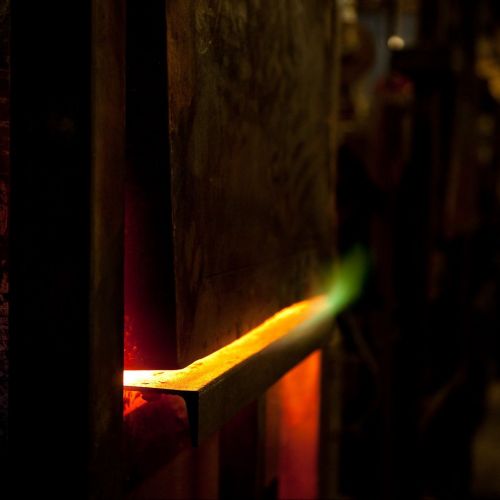

0 Response to "Weld Grill Out of 55 Gal Drum Surfacing Weld Art"
Post a Comment